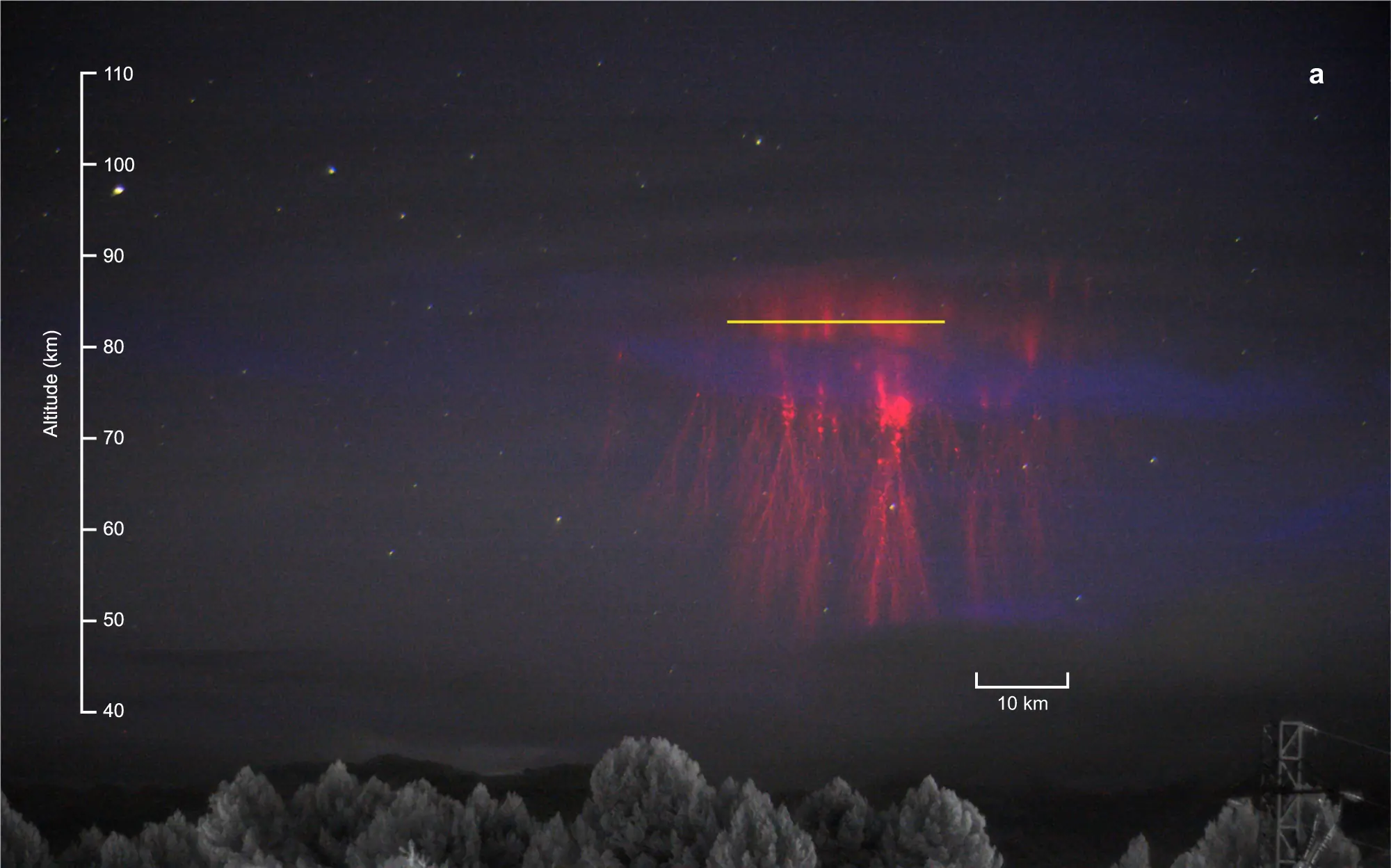
A sudden burst of red light flickered above a thunderstorm, and for a brief moment, Earth’s upper atmosphere revealed one of its most elusive secrets.
From 250 miles above the surface, aboard the International Space Station, astronaut Nichole “Vapor” Ayers looked out her window in the early hours of July 3 and saw it: a sprite.
Luckily for us landlubbers, she captured it.
“Just. Wow,” Ayers posted on social media, attaching a photo of the glowing tendrils reaching down from the mesosphere like ghostly fireworks.
Sprites, formally known as transient luminous events (or TLEs for short), are among the most mysterious phenomena in Earth’s skies. Long suspected, frequently reported by pilots and mountaineers, but rarely verified until recent decades, they appear only after a powerful lightning strike and typically last just milliseconds. They glow in red and pink hues and often resemble jellyfish or carrot-shaped bolts.
A Storm’s Secret Signature

Sprites generally form well above where typical weather unfolds, up to 50 miles in the sky. That makes them invisible to most observers on the ground. But from the vantage point of low Earth orbit, they are in plain view.
“We have a great view above the clouds, so scientists can use these types of pictures to better understand the formation, characteristics, and relationship of TLEs to thunderstorms,” Ayers wrote in her post.
Despite how otherworldly they appear, sprites are very much part of Earth’s weather system. Thunderstorms produce more than just lightning. Under the right conditions, they can also charge the upper atmosphere with enough energy to trigger a luminous discharge above the storm cloud. NASA explains it this way:
From Fringe to Frontier Science
Until 1989, sprites lived mostly in folklore and flight logs. That year, scientists at the University of Minnesota accidentally captured one while testing a low-light camera for flight on a rocket experiment, confirming decades of anecdotal reports. In October 1989, Otha “Skeet” Vaughan of NASA’s Marshall Space Flight Center and scientists working on the Mesoscale Lightning Observation Experiment were able to verify the existence of these electrical discharges with their instrument on space shuttle flight STS-34. Through the 1990s, observers on the shuttle, in airplanes, and even on the ground captured many more images with low-light cameras.
Ever since then, sprites have gone from aviation mystery to a growing field of atmospheric science.
Researchers now understand that sprites are plasma discharges — brief, high-altitude jolts caused by imbalances in electric fields. But the full picture is still murky. Why do some storms create them, while others don’t? Why do they appear in different shapes and patterns? And how are they linked to other upper-atmosphere flashes like blue jets or elves?
NASA and other agencies have been working to answer these questions, but data is hard to come by. Each sprite lasts less than a blink. And unless you’re lucky enough to be flying above a thunderstorm or living aboard the ISS, your odds of spotting one are slim.
Still, not impossible.
A New Role for Citizen Scientists

Since 2022, NASA has invited amateur skywatchers to join the hunt through its Spritacular project. Using long-exposure cameras and detailed reporting, volunteers across the globe have added to what was once an astronomer’s fantasy.
So far, the project has gathered 360 confirmed sprite observations in 21 countries, gathered by 871 contributors. That’s more than the ISS crew has managed in years.
Every sprite recorded helps scientists piece together how energy travels through the atmosphere. It helps researchers understand lightning’s hidden impacts.
For Ayers, the sprite was a surprise. For scientists, it’s a data point. But for the rest of us, it’s a reminder that even in the space age, Earth still holds secrets worth chasing.
What are sprites, exactly?
Sprites are brief, high-altitude bursts of red light caused by large electrical discharges above thunderstorms. They typically appear after strong lightning strikes and may look like branching tendrils, columns, or jellyfish.
Can you see one from the ground?
Yes, though it’s rare. With the right equipment and a good view of a distant thunderstorm (preferably in a dark-sky area), some citizen scientists have captured sprites using long-exposure cameras.
Why do scientists care about them?
Sprites help scientists understand how storms interact with the upper atmosphere. These interactions can influence everything from weather modeling to radio communications and even climate patterns.
What’s next for sprite research?
More observations, especially from orbit and citizen scientists, will help build better models of how sprites form and behave. NASA’s Spritacular project is still ongoing and accepting contributions.









